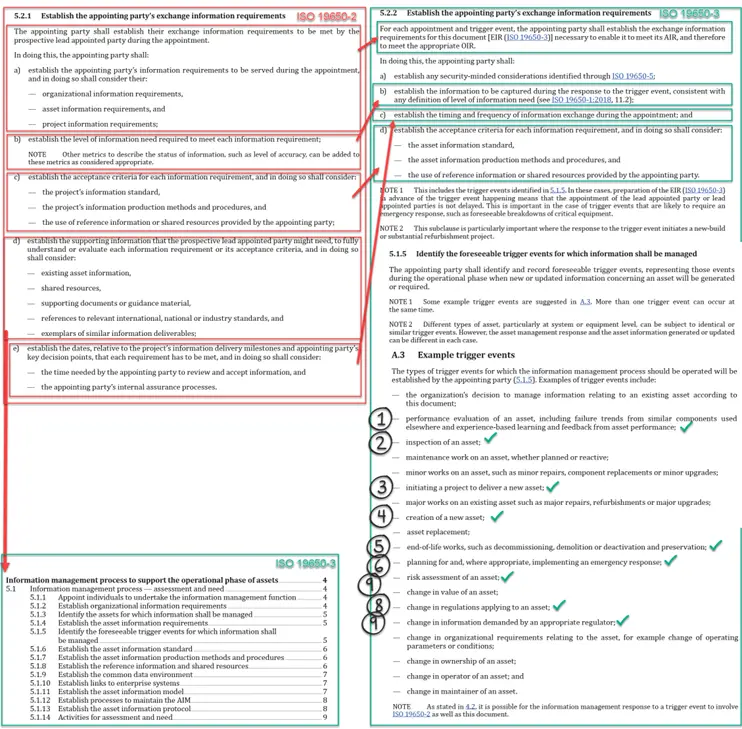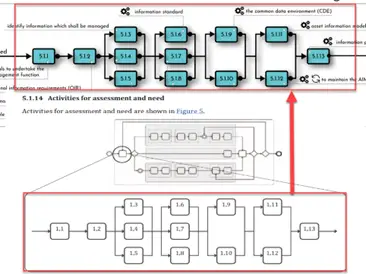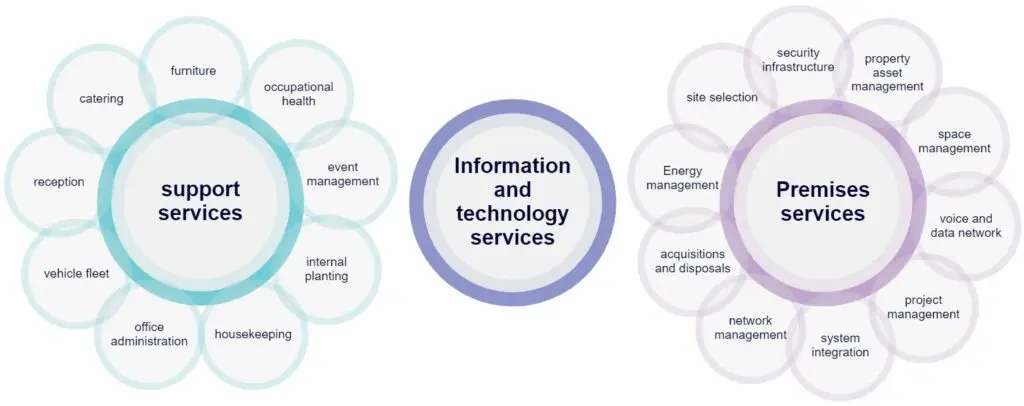Blog
Digital Construction (electrical)
Industry 4.0 in AEC, means to me a decentralized connection between the physical space and the cyberspace through global connectivity.
Exchange Information Requirements (EIR) term introduced by BS EN 19650 replace the PAS 1192 term Employer Information Requirements (EIR) on all projects where BS EN ISO 19650 compliance is required.
The term introduced by ISO 19650 typically describes the Tier 1 Main Contractor.
breakdown structure to help plan the production of information
schedule of information containers and delivery dates, for a specific task team
An MPDT its old PAS 1192 term, the MPDT defines who produces what, when and to what level of detail.
Workflow comparison
First, I constructed an information exchange process diagram based on ISO 19650 Part 2 dedicated to the delivery phase of an asset lifecycle (project delivery). Next, I have created an equivalent process for asset operation in accordance with ISO 19650 Part 3. The workflow is depicted in Figure 1 the process shown illustrates all processes and sub-process described in the standard, representing the logic exactly as described, including the graphical representation of the branching of sub-tasks.
These two ISO 19650 information management processes maps have been used as a frame of reference for comparison and further analysis, the process steps incorporate activity identification that is aligned with the standard’s clauses to facilitate cross-referencing.


The two workflow diagrams (Figure 1) illustrate the high-level structure of information exchange; at a glance, I could not deny the high degree of perceived similarity prompting to take a step back (Kay and King, 2020) and consider the significance of the comparisons.
The comparison prompted two actions: a detailed analysis of ISO 19650 Part 2 and 3 sub-processes and a determination of whether the ISO 19650-3 process provides adequate guidance for asset operation, providing a foundation for answering the primary question of what are the drivers of information exchange.
In Figure 2, I provide an illustration of the analytical comparison procedure utilised during assessment.
The subclauses of ISO 19650-2
The subclauses of ISO 19650-2 that are being compared are highlighted in red, while the subclauses of ISO 19650-3 are highlighted in green. The red arrows point towards equivalent clauses of Part 3. For instance, the analysis reveals that clause 5.2.1 makes no mention of information security, which is addressed in clause 5.2.2 and that certain part two requirements are addressed in other clauses of part three.
In addition, I identified nine triggers from ISO 19650-3 that may be applicable during the delivery phase of an asset’s life.
For instance, I argue that during the design phase of an asset delivery of refurbishment project, experience-based learning and feedback are equally important during the delivery and operation of an asset.
Similarly, before the commencement of refurbishment works, risk assessments and inspections are frequently required to identify sufficient information to allow design progression and statutory compliance of such design.

The following is a discussion of more granular comparisons of workflow similarities between ISO 19650 Part 2 and 3.
Similarities between ISO 19650-2 and ISO 19650-3
Direct comparison of ISO 19650 Part 2 and Part 3 information exchange clauses reveals a high degree of similarity; most information exchange process steps are identical, for example, in Table 1 I compare the headers of clauses in the two standards.
Table 1 – ISO 19650 Part 2 & Part 3 comparison
| BS EN ISO19650-2 | BS EN ISO19650-3 |
|---|---|
| 5.1 Information management process — Assessment and need | 5.1 Information management process — assessment and need |
| 5.1.1 Appoint individuals to undertake the information management function | 5.1.1 Appoint individuals to undertake the information management function |
| 5.1.9 Activities for assessment and need | 5.1.14 Activities for assessment and need |
| 5.2.1 Establish the appointing party’s exchange information requirements | 5.2.2 Establish the appointing party’s exchange information requirements |
| 5.2.2 Assemble reference information and shared resources | 5.2.3 Assemble reference information and shared resources |
| 5.3.1 Nominate individuals to undertake the information management function | 5.3.1 Nominate individuals to undertake the information management function |
| 5.3.2 Establish the delivery team’s (pre-appointment) BIM execution plan | 5.3.2 Establish the delivery team’s (pre-appointment) BIM execution plan |
| 5.3.3 Assess task team capability and capacity | 5.3.3 Assess task team capability and capacity |
| 5.3.4 Establish the delivery team’s capability and capacity | 5.3.4 Establish the delivery team’s capability and capacity |
| 5.3.5 Establish the delivery team’s mobilization plan | 5.3.5 Establish the delivery team’s mobilization plan |
| 5.3.6 Establish the delivery team’s risk register | 5.3.6 Establish the delivery team’s risk register |
| 5.3.7 Compile the delivery team’s tender response | 5.3.7 Compile the delivery team’s response |
| 5.4 Information management process — Appointment | 5.4 Information management process — Appointment |
| 5.4.1 Confirm the delivery team’s BIM execution plan | 5.4.1 Confirm the delivery team’s BIM execution plan |
| 5.4.2 Establish the delivery team’s detailed responsibility matrix | 5.4.2 Establish the delivery team’s detailed responsibility matrix |
| 5.4.4 Establish the task information delivery plan(s) | 5.4.4 Establish the task information delivery plan(s) |
| 5.4.5 Establish the master information delivery plan | 5.4.5 Establish the master information delivery plan |
| 5.4.7 Complete appointed party’s appointment documents | 5.4.7 Complete appointed party’s appointment |
| 5.4.8 Activities for appointment | 5.4.8 Activities for appointment |
| 5.5 Information management process — Mobilization | 5.5 Information management process — Mobilization |
| 5.5.1 Mobilize resources | 5.5.1 Mobilize resources |
| 5.5.2 Mobilize information technology | 5.5.2 Mobilize information technology |
| 5.5.4 Activities for mobilization | 5.5.5 Activities for mobilization |
| 5.6.1 Check availability of reference information and shared resources | 5.6.1 Check availability of reference information and shared resources |
| 5.6.2 Generate information | 5.6.2 Generate information |
| 5.6.3 Undertake quality assurance check | 5.6.3 Undertake quality assurance check |
| 5.6.4 Review information and approve for sharing | 5.6.4 Review information and approve for sharing |

According to Bilal Succar, this graphical representation of the process is unclear. This observation led to the development of a new Enhanced Information Exchange Process (EIEP) as part of contribution to knowledge.
Aspects of asset management activity
When the two workflows are compared, the question of whether ISO 19650-3 applies to asset management processes becomes apparent. According to Wiggins (2021), the scope and extent of Facility Management (FM) activities and services can be clustered into three main groups depicted in Figure 4.

Illustration by the author based on [1]
To gain a holistic understanding of an organization’s portfolio, real estate strategy, and managed services, it is necessary to compile information about the organization’s objectives, physical assets and space utilisation, human resources, current processes, budget forecasts, and expectations. [1, p. 33]
Maintenance activity
Given that the ISO 19650-3 standard was developed specifically to address the unique nature of asset management activities, it is clear from the information exchange management workflow and the scope of Facility Management (FM) illustrated in Figure 4 that the ISO 19650 Part 3 standard barely supports any asset management activities. For instance, there is a combination of operational causes and frequencies, such as weekly fire alarm test results, temperature readings, and compliance. All this information comes from multiple sources, whether an internal or external contractor, sometimes daily, weekly, quarterly, or annually. (Wotton, 2021)
ISO 19650-3 workflows support only the most high-level strategic objectives. Using Figure 4, I compiled a list of asset management activities that are not supported by ISO 19650-3 shown in Table 2
Table 2 Maintenance activity not supported by ISO 19650-3
Illustration by the author based on [1]
To gain a holistic understanding of an organization’s portfolio, real estate strategy, and managed services, it is necessary to compile information about the organization’s objectives, physical assets and space utilisation, human resources, current processes, budget forecasts, and expectations. [1, p. 33]
Maintenance activity
Given that the ISO 19650-3 standard was developed specifically to address the unique nature of asset management activities, it is clear from the information exchange management workflow and the scope of Facility Management (FM) illustrated in Figure 4 that the ISO 19650 Part 3 standard barely supports any asset management activities. For instance, there is a combination of operational causes and frequencies, such as weekly fire alarm test results, temperature readings, and compliance. All this information comes from multiple sources, whether an internal or external contractor, sometimes daily, weekly, quarterly, or annually. (Wotton, 2021)
ISO 19650-3 workflows support only the most high-level strategic objectives. Using Figure 4, I compiled a list of asset management activities that are not supported by ISO 19650-3 shown in Table 2
Table 2 Maintenance activity not supported by ISO 19650-3
| Activity Group | Maintenance activity not supported by ISO 19650-3 |
|---|---|
| Support services | Catering, furniture, occupational health, event management, internal planting, housekeeping, office administration, vehicle fleet, reception |
| Information and technology services | System updates, System patches, anti-virus, implementation checks and maintenance of downloaded packages, hardware checks |
| Premises services | Site selection, property, asset management system, integration network management, energy management, space management |
Summary
ISO 19650 Part 2 and 3 workflow comparisons revealed similarities in the processes, issues with the graphical representation of information management activities, and limitations of Part 3’s maintenance activities.
I will evaluate the information exchange process in detail is separate post.
[1] J. M. Wiggins, Facilities manager’s desk reference. Wiley Blackwell, 2021.

